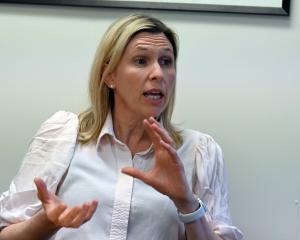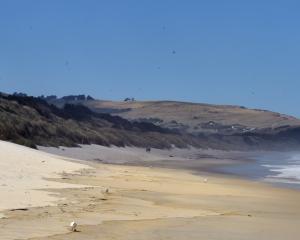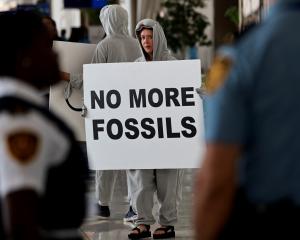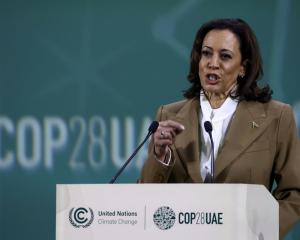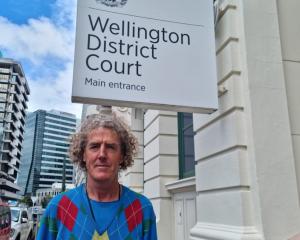The future is going to belong to those countries that are able to grow their economies but reduce their emissions, Nick Smith, the Minister for Climate Change Issues, says.
I returned from the UN Climate Change Conference in Cancún and the OECD Green Growth Roundtable in Paris reassured that New Zealand is on the right track in dealing with climate change.
We are thinking globally and acting locally. Our approach has a good balance between the economy and environment. We're doing our fair share.
Climate change is a public policy nightmare. The science is complex and there are still gaps.
There is no easy answer to the question of deciding which countries should reduce emissions and by how much. The global recovery has made it more challenging with increasing concern over jobs and living costs.
These difficulties cannot be an excuse for doing nothing.
There is too much at stake.
The fundamental problem is that human actions are changing the chemical composition of the atmosphere due to burning fossil fuels, deforestation, industry, and intensive agriculture.
Global greenhouse gas emissions have doubled from about 25 billion tonnes in 1970 to 50 billion tonnes this year, and are on track to double again by 2050 to 100 billion tonnes.
Scientists advise that to avoid dangerous climate change, warming needs to be limited to 2degC.
This would require emissions being halved rather than doubled by 2050.
International negotiations have stalled for more than a decade over how to share the burden between 200 independent nations to reduce emissions.
Some countries like the United States and Australia have emissions of 24 tonnes per person per year, China about five tonnes, and some impoverished nations less than one tonne.
New Zealand's are 19 tonnes per person per year, the 11th highest per person, although we make up only 0.2% of global emissions.
The breakthrough at Cancún was in agreeing on a framework for emissions reductions beyond 2012 when the Kyoto Protocol expires.
The key components are developed countries agreeing to emission reduction targets, developing countries agreeing to mitigation actions to reduce the growth in their emissions, and a new Green Climate Fund to support poorer countries as they adapt.
Much work lies ahead in finalising the detail of this global deal as we prepare for next year's conference in Durban, South Africa.
The Green Growth Roundtable at the OECD in Paris canvassed how countries can create jobs and improve living standards while reducing emissions and other impacts on the natural environment.
The OECD is set to publish in May 2011 a major report on Green Growth with input from economists, businesses, governments, and academics.
The talk is of a new clean technology revolution.
New Zealand needs to strike a careful balance.
Go too fast and we will impose costs on businesses that undermine our competitiveness.
Go too slow and our economy won't adjust. The warning in the The Economist editorial in March last year that New Zealand's 100% pure brand is inconsistent with the recent large increases in emissions needs to be heard.
New Zealand has made more practical progress in the last year than in two decades of analysis and debate. The big step forward was in introducing the emissions trading scheme (ETS) in July this year to the electricity, transport, stationary energy and industrial sectors.
Opposition to the ETS has abated as the doomsday predictions of price impacts did not materialise.
It is interesting to note that despite Australia not having an ETS, their power prices this year have increased by more in response to climate change regulations.
This reinforces the strong advice that directly pricing emissions is more efficient.
The ETS is already delivering dividends.
The last six months has seen record consenting of renewable electricity generation covering hydro, geothermal, tidal and wind.
This contrasts with 70% of new capacity built in the last decade being fossil-fuelled.
We've also seen the recent deforestation reverse and significant new forest plantings.
We've also launched this year the Global Research Alliance on Agricultural Greenhouse Gas Emissions, which now involves 30 countries.
This work is critical to resolving how to feed an additional three billion people in the world by 2050 without increasing emissions. New Zealand has much at stake with 50% of our emissions coming from agriculture and it being our largest export industry.
This last year has also seen record progress in home insulation and solar water heating.
More than 50,000 homes have been insulated under the Government's Warm Up New Zealand scheme.
Also, 2500 homes received support for installations of solar hot-water systems and the scheme was extended in July to include heat-pump technologies.
We're also providing start-up incentives for biofuels and electric cars.
Our programme in 2011 includes a formal review of the ETS.
Next year we'll adopt a Resource Management Act National Policy Statement on Renewable Energy to help get projects consented.
We're also exploring new ideas on how Government can better help small and medium businesses become more energy efficient.
The future is going to belong to those countries that are able to grow their economies but reduce their emissions. New Zealand is on the right path to achieve this Bluegreen goal.




